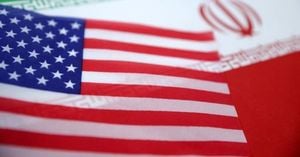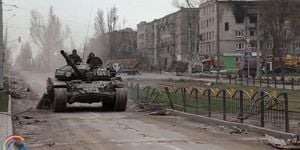Central London became the epicenter of a fierce national debate on September 13, 2025, as more than 110,000 people—some estimates put the number closer to 150,000—marched under the banner "Unite the Kingdom," a protest organized by far-right activist Tommy Robinson. The demonstration, which filled Whitehall and surrounding streets with union jacks and St George's flags, was billed as a rally for free speech and national pride. But it also drew widespread condemnation for the violence that erupted and the divisive rhetoric on display.
According to BBC, the protest was met by a counter-demonstration of around 5,000 anti-racism campaigners, coordinated by Stand Up To Racism. Police reported that 26 officers were injured during the protests—including four who were seriously hurt—while 24 people were arrested for offences ranging from affray and violent disorder to assault and criminal damage. The Metropolitan Police, supported by an additional 500 officers from other forces, faced what Assistant Commissioner Matt Twist described as a “wholly unacceptable” level of violence. Mounted officers used batons to push back crowds, and projectiles were thrown during clashes as police attempted to keep the two groups apart.
The rally, which organizers claimed was about national unity, quickly became a flashpoint for the country’s ongoing debate over immigration and national identity. Protesters carried signs reading “Stop the boats” and “Send them home,” echoing anti-immigration sentiments that have become increasingly prominent in public discourse. The event also featured speeches from controversial figures, including far-right personalities Laurence Fox and Katie Hopkins, and was punctuated by chants such as “Whose street? Our street” and “England.”
Perhaps most controversially, tech billionaire Elon Musk addressed the crowd via videolink. According to The Independent, Musk urged protesters to “fight back or die” in response to what he described as the “destruction of Britain” caused by “massive uncontrolled migration.” He went so far as to call for the dissolution of Parliament and a change in government. These remarks sparked immediate backlash, with Business Secretary Peter Kyle criticizing Musk’s comments as “totally inappropriate.” Liberal Democrat leader Sir Ed Davey added, “He only cares about himself and his ego.”
Prime Minister Sir Keir Starmer, who had faced mounting pressure from MPs and anti-fascist groups to respond, issued a statement on September 14, 2025, making clear the government’s position. “People have a right to peaceful protest. It is core to our country’s values,” Starmer wrote on social media and reiterated to The Guardian. “But we will not stand for assaults on police officers doing their job or for people feeling intimidated on our streets because of their background or the colour of their skin. Britain is a nation proudly built on tolerance, diversity and respect. Our flag represents our diverse country and we will never surrender it to those that use it as a symbol of violence, fear and division.”
Starmer’s remarks underscored a central tension: the flag, a symbol of national pride for many, has increasingly been appropriated by groups promoting exclusionary or violent ideologies. “We will never surrender it to those that use it as a symbol of violence, fear and division,” he insisted, drawing a line between legitimate protest and the intimidation or targeting of minorities. The Prime Minister also condemned the attacks on law enforcement officers, stating unequivocally that such actions would not be tolerated.
Home Secretary Shabana Mahmood echoed this stance, promising that anyone “taking part in criminal activity will face the full force of the law.” The government’s resolve was further reinforced by Business Secretary Peter Kyle, who described the protests as “klaxon calls” for those in power to address the deep-seated concerns fueling such demonstrations—especially around immigration and social cohesion. “There are communities that are being driven further apart, and there are figures such as Tommy Robinson that is able to touch into a sense of disquiet and grievance in the community in our society,” Kyle told BBC’s Sunday with Laura Kuenssberg. He acknowledged that the government has yet to solve these issues, adding, “We haven’t been able to bring our communities back together again since [the financial crisis].”
The events in London were the culmination of a broader movement across the UK, where the flag of St George has been hoisted above allotments, draped across landmarks, and even spray-painted onto streets as part of a "raise the colours" campaign. While some see this as an expression of national pride, others view it as a worrying signal of far-right influence. As ChronicleLive reported, many of those most fervently participating in the flag movement are on the far right of the political spectrum.
The scale and intensity of the September 13 protest were remarkable. The crowd was so large, police said, that it could not be contained within Whitehall, leading to confrontations as officers tried to prevent Robinson supporters from encircling counter-protesters. Mounted police faced off against a sea of union flags, and at one point, a glass bottle struck a police horse, causing both horse and rider to stagger. The violence was not limited to one side; police reported that both protesters and counter-protesters engaged in aggressive behavior, though the majority of arrests were related to the main rally.
The aftermath saw authorities promising further action. The Metropolitan Police stated they were working to identify additional individuals involved in the disorder, with more arrests expected in the coming days and weeks. Of those already detained, three were women and the rest men, ranging in age from 19 to 58. Several individuals faced multiple charges.
The debate over the meaning of the national flag—and who gets to claim it—has only intensified in the wake of the London protests. For Prime Minister Starmer and his government, the message is clear: the flag stands for diversity, tolerance, and respect, not division or hate. Yet for many on the streets, the flag remains a rallying point for a very different vision of Britain—one defined by exclusion and resistance to immigration.
As the dust settles, the challenge for the UK’s leaders is to bridge these divides and address the underlying grievances that have brought so many onto the streets. The events of September 13 have made one thing certain: the battle over Britain’s identity, and the symbols that define it, is far from over.





